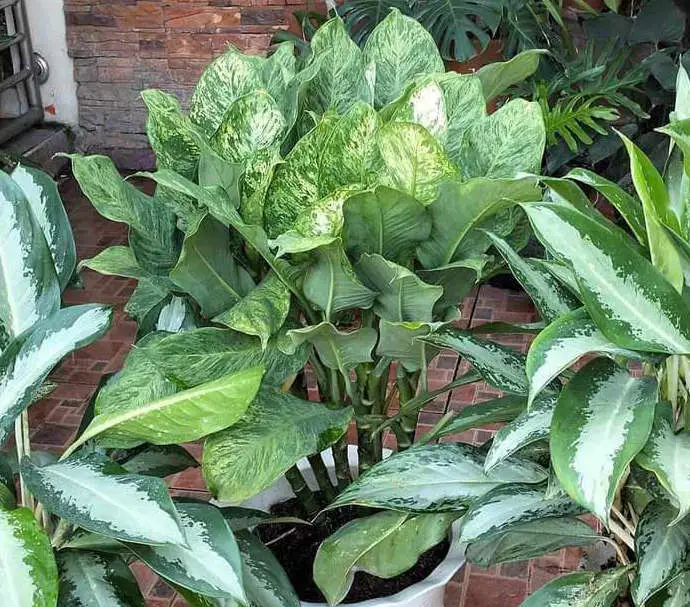Monstera plants are popular for their large leaves that can grow up to two feet long. They come from the rainforests of Central America, and they’re known for being perennial climbers with big stems that will attach themselves to a support structure like a trellis or pergola. If you have one growing in your home, you may be wondering if you can move outdoors. Keep reading to find out…
Can Monstera Live Outside?
Yes, monstera plants can live outside. In fact, they naturally thrive outdoors in warmer climates. If you live in a region that experiences year-round warm weather, moving your monstera outside is an excellent way to let it get some natural sunlight and fresh air.
Monstera plants are very hardy and they’re used to their environment growing in trees where there is more light, water, and air circulation than indoor environments provide. They can also do well indoors if you have the right conditions for them because of how adaptable they are to different situations.
Factors Affecting Monstera’s Life Outside
There are a few important factors to consider when you’re deciding whether or not it would be best for your monstera plant if you move it outdoors. If you can meet these factors and expectations, then feel free to plant your monstera outside.
1. Rain
Monstera plants need a lot of water to survive, so they require higher levels of moisture in the air and soil. They’re comfortable with humid environments but not wet or soggy ones because too much water can cause root rot if there isn’t enough drainage.
If you live somewhere that has moderate levels of rainfall throughout the year, then your monstera will thrive outside without any issue – just keep an eye on things.
2. Sunlight
Placing your monstera plant in a well-lit area can be beneficial for helping it grow and develop. However, you shouldn’t place the pot too close to direct sunlight, such as an area that receives direct sunlight all day.
If your outdoor area gets plenty of natural light throughout the day, without being exposed directly to the sun, then this is sufficient enough for growing most types of monstera outside successfully.
Just make sure you move them back inside if there are any signs of burning on their leaves or stems as this could affect how well they survive after transplanting them outdoors.
3. Temperature
Monstera plants are best suited to warmer climates where the temperature is consistently between 60 and 80 degrees Fahrenheit.
Keep in mind that you’ll want to keep them inside if there are any signs of cold weather because they can die with prolonged exposure. Ideally, they won’t experience temperatures below 60 degrees Fahrenheit.
If your outdoor area experiences a wide range of temperatures throughout the year, and you have no way to protect them from colder conditions, then growing monstera outside might not be ideal for you.
4. Pests
One of the most important factors to consider is whether or not your outdoor environment has any pests. If there are lots of bugs in your area that could be a danger to monstera plants, then you might want to keep them indoors.
You should groom your monstera often to make sure no pests, such as thrips, are attacking your plant.
If your outdoor area is free of insects and other pests, then you can grow it outside with no issue. Just make sure to monitor them closely for the first few weeks after moving them outdoors so that they can adjust to their new environment better.
Tips for Growing Monstera Outside
If your monstera plant has been living inside for a while, transitioning it into an outdoor planter or garden will be easy as long as you follow these tips:
• Make sure it gets lots of sunlight – Monsteras need at least six hours of direct sunlight per day on all sides so make sure that wherever you put it next doesn’t cast any shade throughout the day. You might need to move your monstera around to find the best place for it.
• Make sure your planter drains well – Remember that these plants are used to growing in trees and they like a lot of water, however; you don’t want wetness sitting on their stems as this can make them rot. To avoid potential problems with mold or other diseases, make sure to use a planter with good drainage.
• Use rich soil – Monstera plants like to have more acidic soil as it helps them absorb nutrients and grow, so make sure you choose a potting mix that has lots of organic material that will break down slowly into the dirt while still providing enough nutrients for your plant. You should also add some fertilizer to help give your monstera a boost and promote rapid growth.
• Don’t over-water – Monstera plants like to stay moist, but they can die if their roots sit in water for too long. Make sure you check the soil and feel its moisture before watering your plant again because it shouldn’t be wet or soggy at all times.
Monsteras are very hardy plants that will thrive outside as long as you follow these tips. If properly cared for, they should grow quickly with lots of lush leaves that smell amazing! Just make sure to bring them inside during colder weather so they don’t get damaged by frost or freezing temperatures.
Conclusion
In conclusion, monstera plants can survive outside, but they are best suited to tropical climates where the temperature is at least 60 degrees Fahrenheit. They need lots of sunlight throughout the day and rich soil that drains well.
If you follow these tips, then growing a monstera in an outdoor environment shouldn’t be too difficult! Just make sure to keep an eye out for pests and watch the weather because they won’t survive in freezing conditions.
Tim is an avid gardener from the UK. He was the founder of PlantCarer.com from 2021 to Sep 2023. He sold PlantCarer.com to Aaron. He has since started his own business called Seed To Supper, which provides new gardeners all the materials you need in a box (pots, seeds, compost and instructions) to grow your own delicious and nutritious vegetables and herbs from start to finish – no garden required.






0 Comments